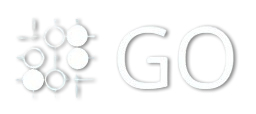
Cloud Journey in AWS
Great question! ? The Cloud Journey in AWS refers to the process of transitioning from traditional on-premises infrastructure to AWS’s cloud platform. This journey involves several stages, from planning and preparation to migration, optimization, and continuous improvement.
?? Stages of the Cloud Journey in AWS
1. Planning and Strategy
Before migrating, you need to develop a strategy for cloud adoption. This stage involves:
Business Case: Identifying the business objectives for cloud migration (e.g., cost savings, scalability, flexibility).
Cloud Adoption Framework (CAF): Using AWS's CAF to assess readiness, define roles, and understand the organizational impact (e.g., people, processes, technology).
Cloud Strategy: Defining which workloads will move to the cloud, what services will be used, and whether to use public, private, or hybrid cloud.
Key AWS tools:
AWS Cloud Adoption Framework (CAF)
AWS Well-Architected Framework
2. Assessing and Preparing for Migration
In this stage, you’ll evaluate the current environment and prepare for migration:
Assessment: Use tools like AWS Migration Hub and AWS Application Discovery Service to assess your existing infrastructure and workloads.
Workload Prioritization: Identify which workloads to migrate first, based on complexity, cost, and business value.
Skills Development: Ensure your teams have the necessary skills through AWS Training and Certification programs.
Key AWS tools:
AWS Migration Hub
AWS Application Discovery Service
AWS TCO Calculator (Total Cost of Ownership for cost comparisons)
3. Migration
The migration stage involves moving workloads, data, and applications to AWS:
Lift-and-Shift (Rehosting): Move applications with minimal changes, using AWS CloudEndure or VMware Cloud on AWS for fast migrations.
Replatforming: Modify workloads to take advantage of cloud-native features, like moving to Amazon RDS from self-managed databases.
Refactoring: Redesign and optimize workloads to fully leverage cloud services (e.g., using AWS Lambda for serverless architecture).
Key AWS tools:
AWS CloudEndure (for lift-and-shift)
VMware Cloud on AWS
AWS Database Migration Service (DMS)
AWS Elastic Beanstalk
4. Optimization
Once you’ve migrated, the next step is to optimize your cloud environment for performance, cost, and security:
Cost Optimization: Use services like AWS Cost Explorer, AWS Budgets, and AWS Trusted Advisor to track and optimize spending.
Performance Optimization: Improve application performance using Amazon CloudWatch for monitoring and AWS Auto Scaling for scaling resources dynamically.
Security and Compliance: Implement best practices for security with AWS IAM, AWS Shield, and AWS KMS for encryption.
Key AWS tools:
AWS Trusted Advisor
AWS Auto Scaling
AWS Cost Explorer
AWS CloudWatch
5. Innovation and Modernization
The cloud journey doesn’t stop after migration; the next step is to innovate and modernize to leverage cloud-native capabilities:
Serverless Architectures: Transition workloads to AWS Lambda for event-driven computing without managing servers.
Big Data and Analytics: Implement Amazon Redshift, AWS Glue, and Amazon EMR for processing large datasets.
Machine Learning: Leverage Amazon SageMaker for building, training, and deploying ML models.
Key AWS services:
AWS Lambda
Amazon SageMaker
Amazon Redshift
Amazon EMR
6. Continuous Improvement and Monitoring
The final phase is about continuously improving and monitoring your cloud environment:
Operational Monitoring: Use Amazon CloudWatch to collect and monitor operational data in real time.
Security & Governance: Implement continuous security monitoring with AWS Config and AWS Security Hub.
Innovation: Keep innovating by adopting new AWS services and features as they become available.
Key AWS services:
Amazon CloudWatch (for monitoring)
AWS Security Hub (for security alerts)
AWS Config (for governance)
? AWS Tools for Cloud Journey
| Stage | AWS Tools/Services |
|---|---|
| Planning & Strategy | AWS CAF, AWS Well-Architected Framework |
| Assessing & Preparing | AWS Migration Hub, AWS Application Discovery, AWS TCO Calculator |
| Migration | AWS CloudEndure, AWS Database Migration Service (DMS), VMware Cloud on AWS |
| Optimization | AWS Trusted Advisor, AWS Cost Explorer, Amazon CloudWatch |
| Innovation & Modernization | AWS Lambda, Amazon SageMaker, Amazon Redshift |
| Continuous Improvement | AWS Config, AWS Security Hub, Amazon CloudWatch |
? Cloud Journey Example
Let's say you're migrating an e-commerce platform to AWS:
Planning: Define your goal to scale your website and improve performance.
Assessing: Use AWS Migration Hub to assess your on-premise environment.
Migration: Rehost your application with AWS CloudEndure and move your database to Amazon RDS.
Optimization: Use AWS Auto Scaling to scale your web servers and optimize your costs with AWS Cost Explorer.
Innovation: Modernize your app with AWS Lambda for certain event-driven features (e.g., image processing).
Continuous Improvement: Monitor your app using Amazon CloudWatch and implement security best practices with AWS Security Hub.
? Key Takeaways
The AWS Cloud Journey is a continuous process: from initial planning and migration to optimization and innovation.
AWS provides a wide range of tools and services to help you at every stage.
The AWS Well-Architected Framework is a great guide for building secure, high-performing, and cost-efficient cloud architectures.
